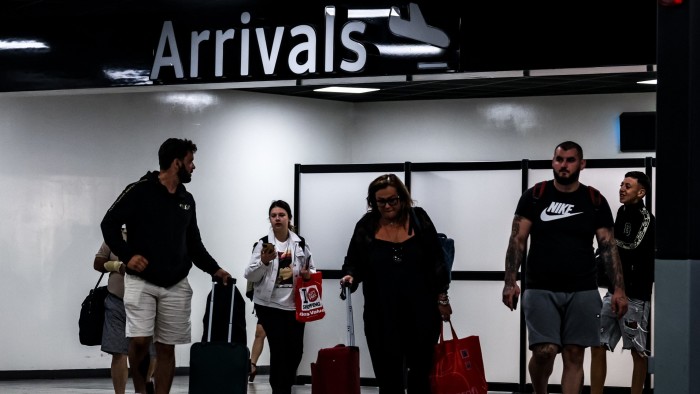Stay informed with free updates
Simply sign up to the Global migration myFT Digest — delivered directly to your inbox.
Labour migration to rich countries fell by more than a fifth last year as job markets weakened and countries such as the UK tightened visa rules, according to new research by the OECD.
The Paris-based organisation said permanent work-related migration to its member countries, which had risen steadily since the pandemic, fell by 21 per cent between 2023 and 2024 to 934,000 — even before Donald Trump’s return to the White House choked off inflows to the US.
The drop was partly due to policy clampdowns, in particular in the UK, where net immigration fell by more than 40 per cent from 2023. But even without a change of policy stance, labour migration fell in most EU member states, dropping below 2019 levels in countries such as Germany and the Netherlands that had seen historically high inflows.
This reflected a “less favourable” economic situation, as well as the presence of many Ukrainian refugees who had “helped to reduce the pressure” in sectors with chronic labour shortages, said Jean-Christophe Dumont, head of the OECD’s international migration division.
The OECD also reported a sharp fall of 13 per cent between 2023 and 2024 in the number of new international students. This followed a tightening of visa rules in all four of the main anglophone host countries — the US, UK, Canada and Australia — in response to concerns over visa fraud and the impact of students on local housing markets.
Migration to OECD countries for family and humanitarian reasons continued to rise in 2024, with the latter driven by a surge of asylum applications in the US in the final months of Joe Biden’s administration, as well as the sharp increase in arrivals by small boats in the UK.
This meant that overall, permanent migration to advanced economies declined by just 4 per cent from the high recorded in 2023, and the total of 6.2mn new immigrants remained 15 per cent above the pre-pandemic level of 2019.
Temporary migration for work — through visa routes without a path to settlement — meanwhile stabilised at 2.3mn, 26 per cent above its 2019 level and 51 per cent higher than in 2015.
Dumont said that despite the Trump administration’s crackdown, overall immigration to the OECD looked likely to decline only modestly in 2025, remaining at historically high levels.
Given a weaker economic backdrop over the past year, it was striking that migrants were still faring reasonably well in jobs markets, Dumont added. The employment rate among immigrants is notably strong in the UK. At 76 per cent, it is higher than that of the UK-born workforce.
Dumont said this was partly because visa routes focused on graduate-level jobs, but also because lower-skilled migrants were “filling gaps” where UK nationals did not want to work.




